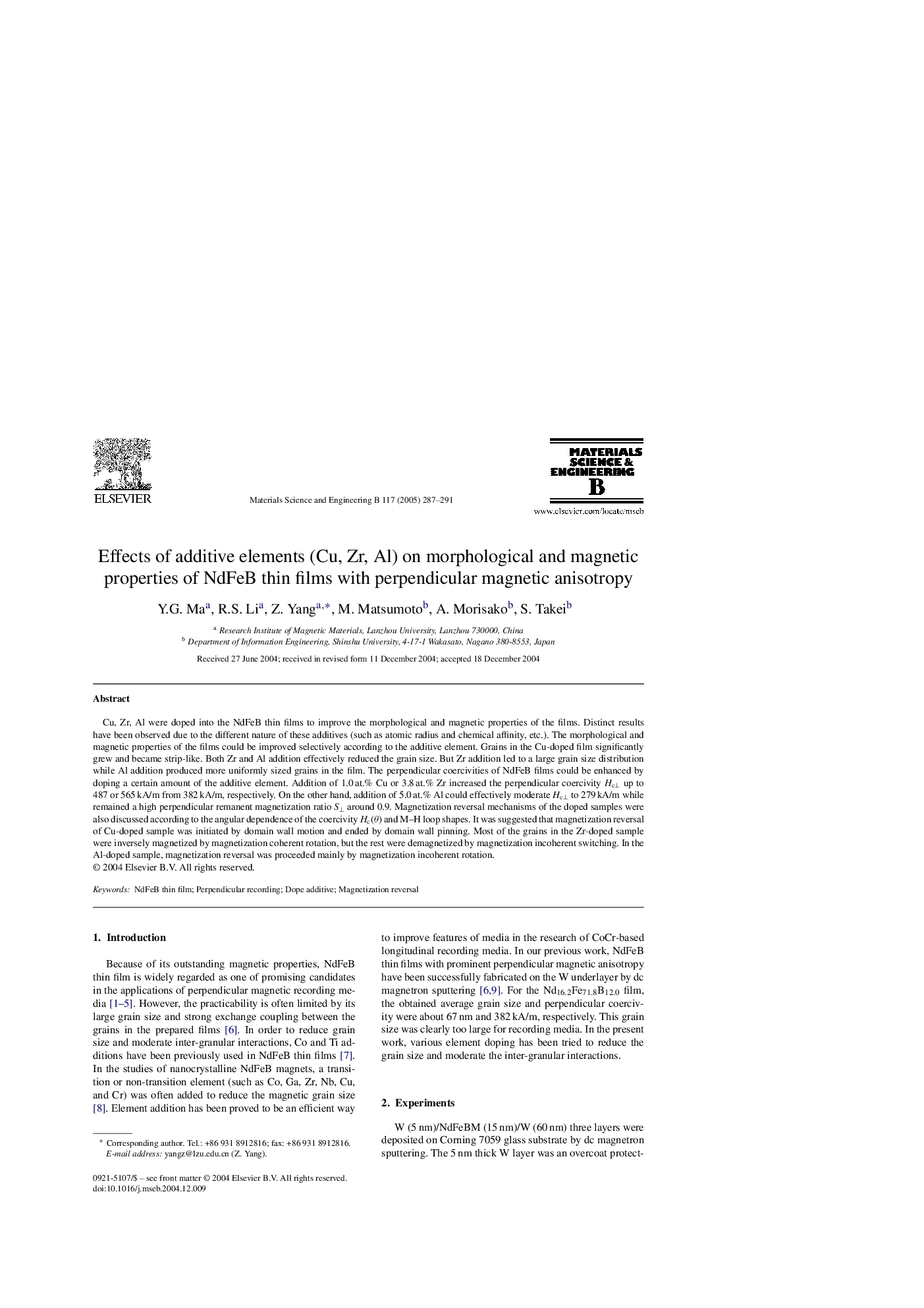| Article ID | Journal | Published Year | Pages | File Type |
|---|---|---|---|---|
| 10640115 | Materials Science and Engineering: B | 2005 | 5 Pages |
Abstract
Cu, Zr, Al were doped into the NdFeB thin films to improve the morphological and magnetic properties of the films. Distinct results have been observed due to the different nature of these additives (such as atomic radius and chemical affinity, etc.). The morphological and magnetic properties of the films could be improved selectively according to the additive element. Grains in the Cu-doped film significantly grew and became strip-like. Both Zr and Al addition effectively reduced the grain size. But Zr addition led to a large grain size distribution while Al addition produced more uniformly sized grains in the film. The perpendicular coercivities of NdFeB films could be enhanced by doping a certain amount of the additive element. Addition of 1.0 at.% Cu or 3.8 at.% Zr increased the perpendicular coercivity Hc⥠up to 487 or 565 kA/m from 382 kA/m, respectively. On the other hand, addition of 5.0 at.% Al could effectively moderate Hc⥠to 279 kA/m while remained a high perpendicular remanent magnetization ratio S⥠around 0.9. Magnetization reversal mechanisms of the doped samples were also discussed according to the angular dependence of the coercivity Hc(θ) and M-H loop shapes. It was suggested that magnetization reversal of Cu-doped sample was initiated by domain wall motion and ended by domain wall pinning. Most of the grains in the Zr-doped sample were inversely magnetized by magnetization coherent rotation, but the rest were demagnetized by magnetization incoherent switching. In the Al-doped sample, magnetization reversal was proceeded mainly by magnetization incoherent rotation.
Related Topics
Physical Sciences and Engineering
Materials Science
Electronic, Optical and Magnetic Materials
Authors
Y.G. Ma, R.S. Li, Z. Yang, M. Matsumoto, A. Morisako, S. Takei,
